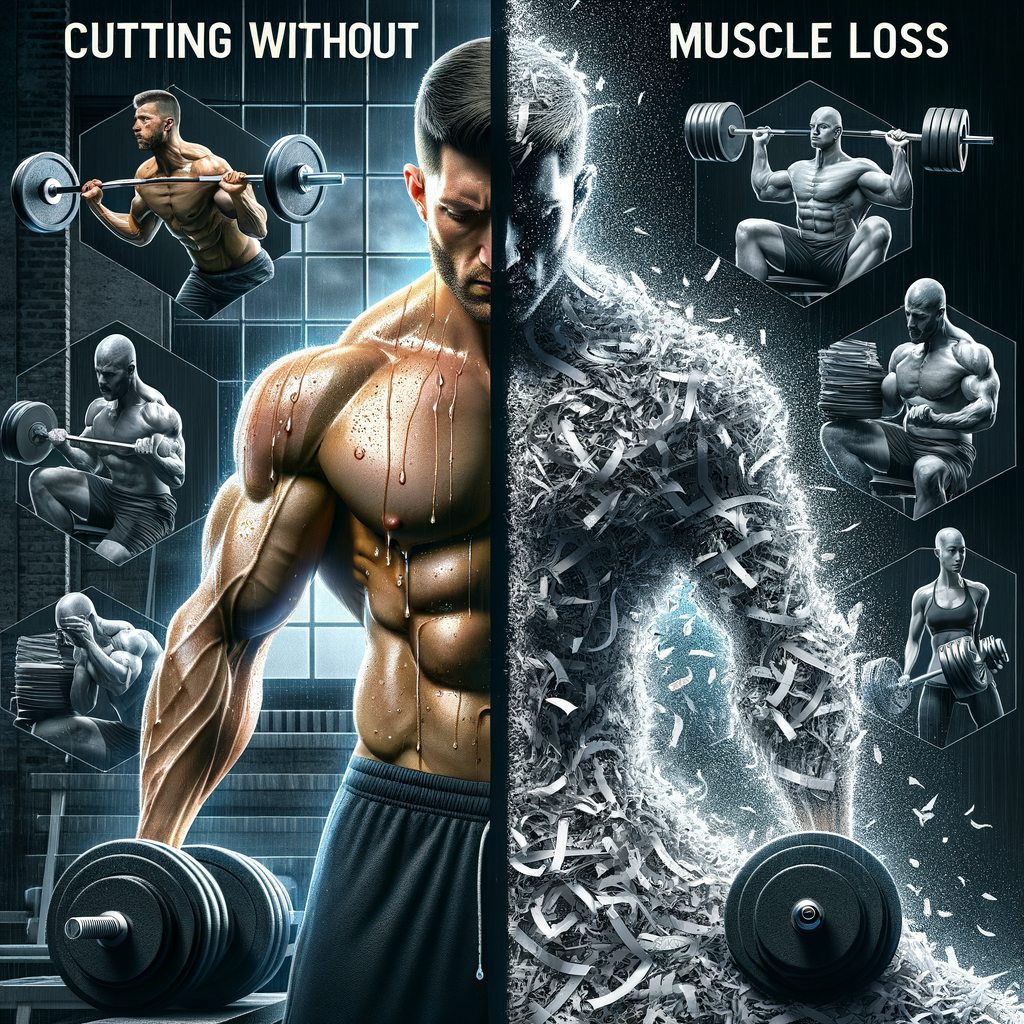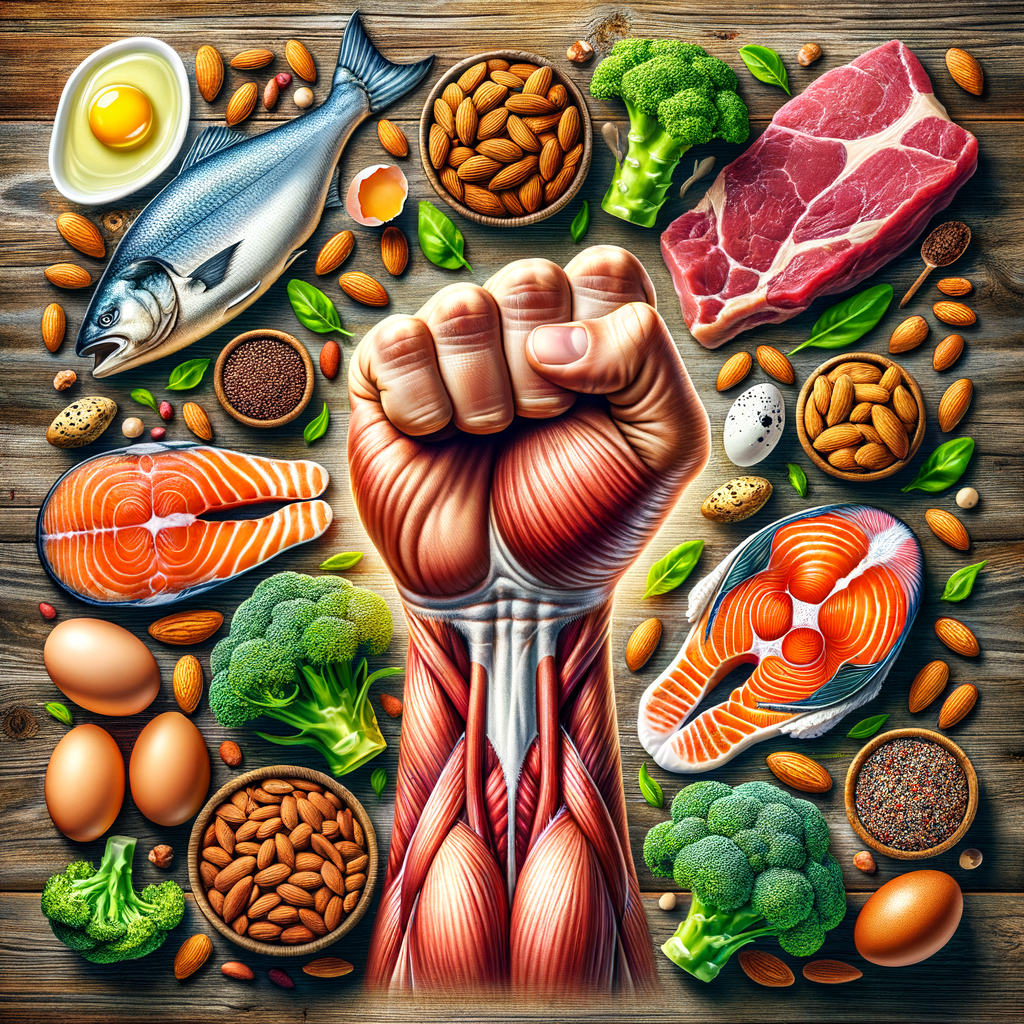- Understanding the Cutting Phase
- Nutrition: The Backbone of Cutting
- Caloric Deficit vs. Maintenance
- Macronutrient Balancing
- The Role of Strength Training
- Progressive Overload
- Frequency and Volume
- Cardio: Finding the Right Balance
- Types of Cardio
- Choosing the Right Duration
- Recovery: Don’t Overlook It
- Sleep
- Active Recovery
- Supplements: Helpful or Hype?
- Protein Powders
- Branched-Chain Amino Acids (BCAAs)
- Staying Hydrated
- Benefits of Hydration
- Tracking Progress: The Right Metrics
- Body Measurements
- Progress Photos
- Mental Strategies for Success
- Goal-Setting
- Mindful Eating
- The Importance of Flexibility
- Refeeding Days
- Listening to Your Body
- Recap: Key Takeaways
- Frequently Asked Questions (FAQs)
- 1. What is cutting without muscle loss?
- 2. How much protein do I need when cutting?
- 3. Can I do cardio while cutting?
- 4. Is it okay to take supplements during cutting?
- 5. How do I know if I’m in a caloric deficit?
- 6. Should I include refeeding days?
- 7. How important is sleep for muscle retention?
- 8. What if I'm not seeing progress?
- 9. Can I cut and build muscle at the same time?
- 10. How long should a cutting phase last?
- References
Understanding the Cutting Phase
When discussing fitness goals, the term “cutting” often surfaces. It refers to a phase where individuals aim to reduce body fat while retaining muscle mass. The importance of maintaining muscle during this phase cannot be overstated. After all, no one wants to sacrifice hard-earned gains in pursuit of a leaner physique.
Cutting without muscle loss is possible with the right strategies in place. Achieving this balance requires attention to your diet, workout routine, and lifestyle. In this guide, we’ll explore actionable steps to help you maintain muscle while successfully cutting down body fat.
Nutrition: The Backbone of Cutting
Nutrition plays a critical role in your cutting process. You can’t expect to see results without a solid meal plan. Understanding the principles of caloric intake and macronutrient distribution is key.
Caloric Deficit vs. Maintenance
To cut effectively, you need to consume fewer calories than your body burns. This creates a caloric deficit, prompting your body to tap into stored fat for energy. However, it’s crucial you don’t go too low; a severe caloric deficit can lead to muscle loss. Aim for a modest deficit of 250-500 calories per day.
Macronutrient Balancing
Balancing your macronutrients—proteins, fats, and carbohydrates—further enhances your cutting efforts. A higher protein intake supports muscle preservation while you lose fat. Aim for about 1.2 to 2.2 grams of protein per kilogram of body weight. Include healthy fats and complex carbohydrates to ensure you have enough energy for workouts.
| Macronutrient | Percentage of Daily Intake | Recommended Grams per kg |
|——————-|—————————|—————————|
| Protein | 25-35% | 1.2 – 2.2 |
| Carbohydrates | 40-55% | 3 – 7 |
| Fats | 20-30% | 0.8 – 1.2 |
The Role of Strength Training
When cutting, strength training takes the spotlight. It’s your best ally in retaining muscle mass while losing fat.
Progressive Overload
To keep building strength, you need to implement progressive overload. This concept refers to gradually increasing weights or resistance in your workouts. By continually challenging your muscles, you signal them to adapt and grow, thereby maintaining muscle mass.
Frequency and Volume
Aim for at least three to five strength training sessions each week. Focus on compound movements like squats, deadlifts, and bench presses. These exercises engage multiple muscle groups, maximizing your efforts in a shorter time frame.
Cardio: Finding the Right Balance
While strength training is vital, incorporating cardio into your routine also matters. However, you must find the right balance to avoid muscle loss.
Types of Cardio
Two main types of cardio exist: steady-state and high-intensity interval training (HIIT). Steady-state cardio involves maintaining a consistent pace, while HIIT alternates between intense bursts of effort and rest. For cutting, both have their merits.
Choosing the Right Duration
Aim for 150-300 minutes of moderate-intensity cardio per week. You can divide this time based on your preference, whether through longer sessions of steady-state cardio or several shorter, high-intensity bursts.
Recovery: Don’t Overlook It
Recovery deserves attention as well. Many people overlook this aspect, thinking more work equals better results. However, your body needs time to repair and grow, particularly during a cutting phase.
Sleep
Aim for 7-9 hours of quality sleep each night. Sleep regulates hormones that affect appetite and muscle recovery. Inadequate sleep can hinder weight loss and muscle retention, making it vital for your success.
Active Recovery
Incorporating active recovery days also helps. Gentle exercises like yoga, stretching, or leisurely walks give your muscles a break while keeping your body moving. This balance promotes blood flow and aids in recovery.
Supplements: Helpful or Hype?
Supplements can fill nutritional gaps, but they shouldn’t replace whole foods. When cutting, several supplements may support your efforts without muscle loss.
Protein Powders
Whey or plant-based protein powders can help you meet your protein goals. They make it easier to consume a sufficient amount without loading up on calories.
Branched-Chain Amino Acids (BCAAs)
BCAAs can also be helpful. These amino acids support muscle recovery and help preserve muscle when in a caloric deficit. They can be taken before or after workouts for best results.
Staying Hydrated
Hydration often gets overlooked, but it’s vital for overall health and cutting success. Your body functions best with adequate water intake. Aim for at least 2-3 liters a day, adjusting based on activity levels and climate.
Benefits of Hydration
Hydration supports metabolism, aids digestion, and helps manage hunger signals. Drinking water may also prevent you from mistaking thirst for hunger, which can lead to overeating.
Tracking Progress: The Right Metrics
Tracking progress helps you stay accountable. However, avoid focusing solely on the scale. Share other metrics to gauge your success during the cutting phase.
Body Measurements
Taking body measurements—like waist, hips, and chest—provides a fuller picture of your progress. Changes in these areas can indicate fat loss, even if the scale doesn’t reflect it.
Progress Photos
Taking regular progress photos offers visual proof of your transformation. Stand in similar poses and lighting for each photo to see how your body is changing over time.
Mental Strategies for Success
Mental fortitude matters when cutting. It helps you stick to your plan and remain focused on your goals.
Goal-Setting
Setting achievable and realistic goals keeps you motivated. Break your overall goal into smaller, manageable steps. Celebrate milestones along the way to stay inspired.
Mindful Eating
Practicing mindful eating encourages better choices. Focus on what you eat and savor each bite. This approach helps prevent overeating and increases energy awareness.
The Importance of Flexibility
Life happens, and your cutting plan should allow for flexibility. Sticking too stringently to a rigid plan can lead to burnout.
Refeeding Days
Incorporate occasional refeeding days, allowing for increased caloric intake. This not only helps mitigate fatigue but can also give your metabolism a boost.
Listening to Your Body
Always listen to your body. If you feel tired, give yourself permission to take a break. Adapting your strategy may lead to better long-term results.
Recap: Key Takeaways
To successfully cut without muscle loss, focus on a balanced approach to nutrition, training, recovery, and mindset. Pay attention to the caloric deficit, maintain protein intake, and stay consistent with strength training. Remain flexible and adaptable to your needs, and monitor your progress through various measures.
By following these straightforward strategies, you can achieve your cutting goals while ensuring your hard-earned muscle remains intact. Now you’re better equipped to embark on your cutting journey with confidence and ease.
Frequently Asked Questions (FAQs)
1. What is cutting without muscle loss?
Cutting without muscle loss refers to the process of reducing body fat while maintaining muscle mass through smart nutrition, consistent strength training, and recovery.
2. How much protein do I need when cutting?
Aim for about 1.2 to 2.2 grams of protein per kilogram of body weight to support muscle preservation during your cutting phase.
3. Can I do cardio while cutting?
Yes, cardio is beneficial during cutting. However, balance it with strength training to minimize muscle loss, and avoid excessive cardio.
4. Is it okay to take supplements during cutting?
Supplements like protein powders and BCAAs can be helpful to meet nutritional goals, but they shouldn’t replace whole foods.
5. How do I know if I’m in a caloric deficit?
Track your food intake and monitor your weight or measurements. A consistent decline indicates you’re likely in a caloric deficit.
6. Should I include refeeding days?
Refeeding days can benefit your metabolism and provide psychological relief. They’re great for maintaining energy and building resilience.
7. How important is sleep for muscle retention?
Sleep is crucial; it supports recovery and regulates hormones that influence appetite and muscle maintenance. Aim for 7-9 hours per night.
8. What if I’m not seeing progress?
If you aren’t making progress, reassess your caloric intake, workout routine, and adherence. Adapt your strategy based on your body’s feedback.
9. Can I cut and build muscle at the same time?
While challenging, it’s possible to build muscle while losing fat, especially for beginners. Focus on a moderate caloric deficit and consistent strength training.
10. How long should a cutting phase last?
A cutting phase duration varies; generally, 8-16 weeks is recommended. Avoid prolonged cuts to prevent muscle loss and metabolic slowdowns.
References
1. Phillips, S. M., & Van Loon, L. J. (2011). Dietary protein for athletes: From requirements to metabolic advantage. Applied Physiology, Nutrition, and Metabolism, 36(5), 647-663. Link
2. Schoenfeld, B. J. (2010). The mechanisms of muscle hypertrophy and their application to resistance training. Journal of Strength and Conditioning Research, 24(10), 2857-2872. Link
3. Trexler, E. T., et al. (2014). The role of nutritional interventions during caloric restriction in improving resistance training outcomes. Journal of the International Society of Sports Nutrition, 11(1), 1-12. Link
4. Helms, E. R., et al. (2014). Evidence-based recommendations for natural bodybuilding contest preparation: nutrition and supplementation. Journal of the International Society of Sports Nutrition, 11(1), 1-11. Link



